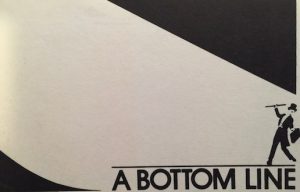It was an actual shower aha moment.
My business card said that I was the Chief Knowledge Officer for the hot consulting firm. We had a NY Times bestseller on how to compete with this new thing called the Internet. We had our pick of clients and our pick of MBA graduates. In seven years we had grown from 25 people to over a thousand.
I was trying to solve the problem that all knowledge management people were fighting. How do you get smart people to share what they knew with the other smart people in the organization? Incentives didn’t seem to work. Neither did measurement and reporting systems. Or formal systems and practices.
One morning in the shower it hit me. I was the problem. Not that I was doing a bad job as CKO for the organization. I was doing a bad job as a knowledge worker sharing knowledge with myself. Until I could share knowledge with myself, I wasn’t likely to share it with anyone else.
The smart people in my organization weren’t hoarding knowledge out of some Machiavellian desire to enhance their position. At best, they were struggling to identify what it was they knew that was worth sharing. At worst, they were embarrassed at how woefully haphazard their personal practices and systems were at surfacing knowledge and insights that felt worthy of sharing.
Adopting a new perspective on a problem sets off a chain of reasoning. Knowledge management as a personal problem rather than an organizational one pushes you away from questions of efficiency and towards questions of how to think about outcomes and effectiveness. Can you put systems and practices in place that nudge individual knowledge workers towards finding more effective ways to learn from and leverage their experience?

 “We need you back in the office now, Anthony’s team just got fired.”
“We need you back in the office now, Anthony’s team just got fired.”